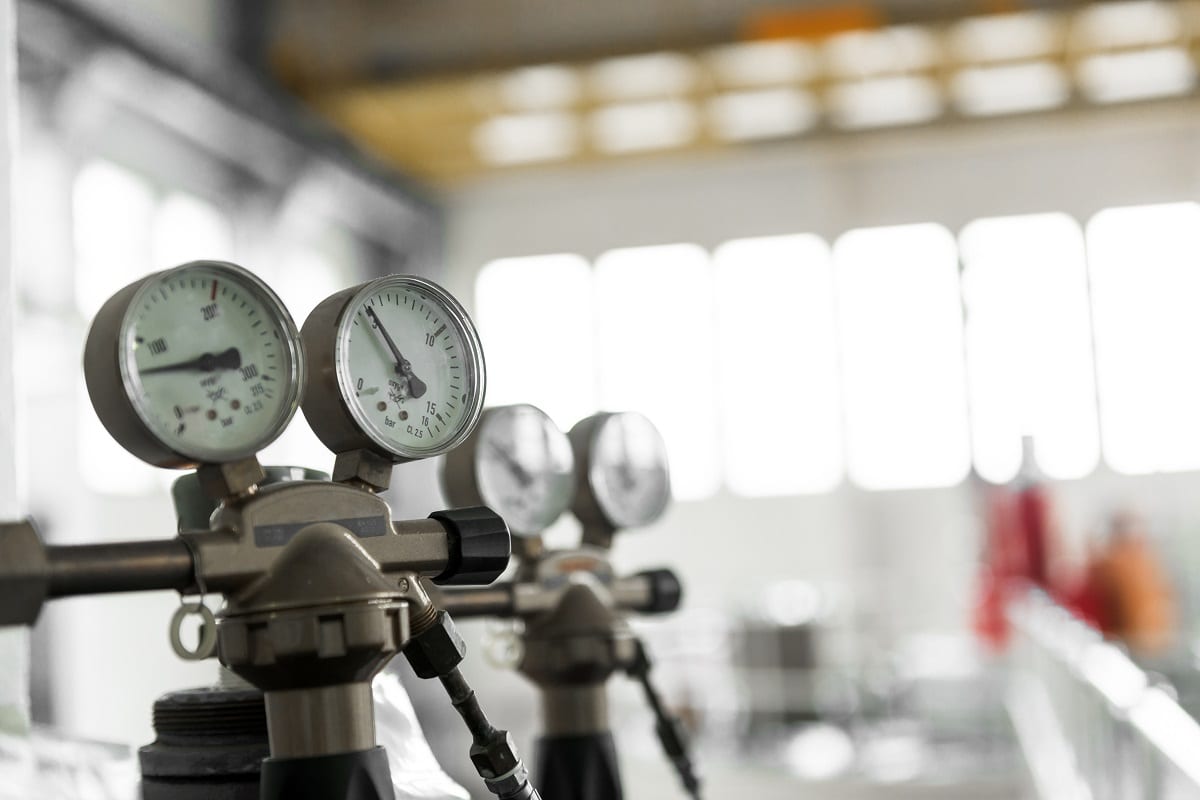Depending on the operating conditions, site requirements, and optimal uses, there are several differences to consider when deciding between a centrifugal and reciprocating compressor for an application.
Operators have a lot of options for compressors, and the two variations we’ll be going over in this article can be a solution in a wide variety of applications.
When determining which solution works best, there are four main components to be especially aware of:
- Overall cost
- Flow rate
- Efficiency
- Multi-staging capability
What Is a Centrifugal Compressor?
A centrifugal compressor is a turbocompressor or dynamic compressor which has a radial design. This configuration works at constant pressure, which means that the performance is primarily affected by inlet temperatures and other external factors.
It works by drawing air into the core of a rotating impeller with radial blades. The air is pushed into the center by centrifugal force, thus resulting in rising pressures and kinetic energy. This energy is then converted into pressure by passing through a diffuser and volute.
A centrifugal compressor is a popular option for:
- Oil and gas
- Process industries
- Wastewater treatment plants
High and low-pressure variants are used depending on specific applications and industries.
What Is a Reciprocating Compressor?
A reciprocating compressor utilizes pistons for compressing air and has a design that resembles that of an internal combustion engine. These pistons sit inside cylinders and are central to the primary function of the compressor.
For compression, the pistons draw back as gas gets injected from an intake valve in the compressor. After the gas is injected into the cylinders, it’s compressed by the reciprocating motion of the pistons.
Central Differences Between the Two
When determining the central differences between centrifugal and reciprocating compressors — both operational and efficiency distinctions exist.
Centrifugal compressors typically have much better isothermal efficiency. They also score higher on isentropic efficiency. These compressors also don’t require nearly as much maintenance as reciprocating compressors.
Reciprocating compressors, on the other hand, operate at much better efficiencies than centrifugal compressors when the pressure ratio is more than two. These compressors are also easier and cheaper to repair.
Operationally, centrifugal, and reciprocating compressors have varying volume and pressure features. For example, reciprocating compressors deal with pulsating air at a much higher pressure ratio. What this means is that they aren’t able to handle nearly as much air volume as centrifugal compressors.
Reciprocating compressors have a multistage operation. While advantageous for a wide variety of applications, multistage systems also run into a lot of problems, which is why they require more maintenance than their centrifugal counterparts.
Centrifugal compressors are much better for low pressure and high discharge operations because they work at a constant rate. The pressure ratio is also much lower at around one and four, while reciprocating compressors are around five and eight.
A reciprocating compressure is far more flexible than centrifugal compressors and works better with changing pressures.
Finding the Right Compressor
Finding the right compressor for your specific scope and operational need can be challenging. The right manufacturer with in-depth knowledge, experience, and a variety of options can be invaluable for many operations.





